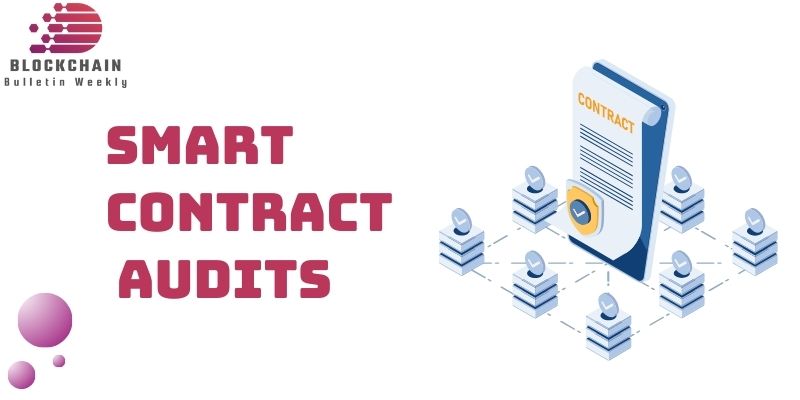Smart Contract Audits are essential for ensuring the security and functionality of blockchain contracts. By identifying vulnerabilities and improving code quality, audits protect user assets, build trust within the community, and minimize legal and financial risks.
What is a Smart Contract?
A smart contract is an automated program that runs on a blockchain, designed to execute transaction terms without the need for third-party intervention. These contracts are commonly used in decentralized finance (DeFi), non-fungible tokens (NFTs), and other blockchain applications. Smart contracts can manage assets, process transactions, and automatically enforce agreements when predefined conditions are met.
Why Do Smart Contracts Need Auditing?
While smart contracts promise transparency and automation, they are not immune to programming errors and security loopholes. Once a smart contract has a vulnerability, attackers can exploit it to steal assets or manipulate transactions.
Smart contracts offer transparency and automation, but they can still contain coding errors or security vulnerabilities. If a vulnerability is found, attackers may exploit it to steal funds or manipulate transactions. Logical flaws can also cause the contract to behave incorrectly, leading to unintended actions.
Without auditing, these issues may go unnoticed and result in significant financial losses. Therefore, auditing smart contracts is essential to identify and fix potential risks, ensuring they function securely and as intended.
The Smart Contract Audits Process
A smart contract audit process involves a series of checks designed to identify coding errors, discover security vulnerabilities, and provide recommendations for improvement to ensure the contract runs securely. The process typically includes:
Step 1: Code Review
Auditors manually examine the contract’s source code to identify errors or security vulnerabilities that could be exploited.
Step 2: Business Logic Validation
Auditors check the business logic to ensure the contract enforces the correct terms and conditions without any logical errors.
Step 3: Compatibility Evaluation
The contract is tested on different blockchains to ensure it functions efficiently across various platforms.
Step 4: Simulated Attack Testing
Auditors simulate potential attacks (e.g., buffer overflow, reentrancy) to test the contract’s resilience against common threats.
Step 5: User Interface Security Check
The UI of the decentralized application interacting with the contract is reviewed for security weaknesses.
Tools and Methods for Auditing
Several tools have been developed to help auditors identify flaws in smart contract code. These tools enhance the efficiency of the auditing process.
- MythX is an automated auditing service that can detect a wide variety of security vulnerabilities in smart contracts, making it a comprehensive tool for identifying potential risks.
- Slither is an open-source tool designed for Solidity-based smart contracts. It uses static analysis to find issues in the code, helping developers spot problems early on.
- Oyente is another tool that focuses on detecting specific security issues, such as reentrancy attacks, asynchronous behavior, and logic errors, which are common vulnerabilities in smart contracts.
Common Smart Contract Vulnerabilities
Smart contracts can have several vulnerabilities that auditors focus on.
Reentrancy attacks happen when an attacker exploits callback functions to withdraw funds repeatedly before the contract updates its balance.
Integer overflow/underflow occurs when arithmetic operations exceed number limits, causing unexpected behavior.
Gas limit and loop issues arise when long loops or improper gas handling cause the contract to fail.
Access control vulnerabilities happen when unauthorized users gain access to sensitive functions, compromising the contract’s security.
Auditors look for these flaws to ensure the contract operates safely.
Benefits of Smart Contract Audits
Smart contract audits offer key advantages for both developers and users.
Enhanced security is one of the main benefits, as audits help identify and fix vulnerabilities, protecting users’ assets from attacks.
Increased community trust follows when a contract is audited, as it is viewed as more reliable by both the community and investors.
Lastly, reduced legal risks come from auditing, as it ensures the contract complies with regulations and avoids potential legal issues.
In the world of cryptocurrency, security is a critical factor, and smart contracts play a central role in ensuring transactions are conducted safely. Smart contract audits not only help identify and fix security flaws but also ensure developers build safe, transparent, and reliable contracts. Therefore, investing in a comprehensive audit process is a vital step to protect assets and ensure safety in the blockchain space.
Unlock the latest trends in blockchain! Follow Blockchain Bulletin Weekly for cutting-edge insights, expert analysis, and updates that keep you ahead in the world of crypto and smart contracts. Join us now and stay informed!
